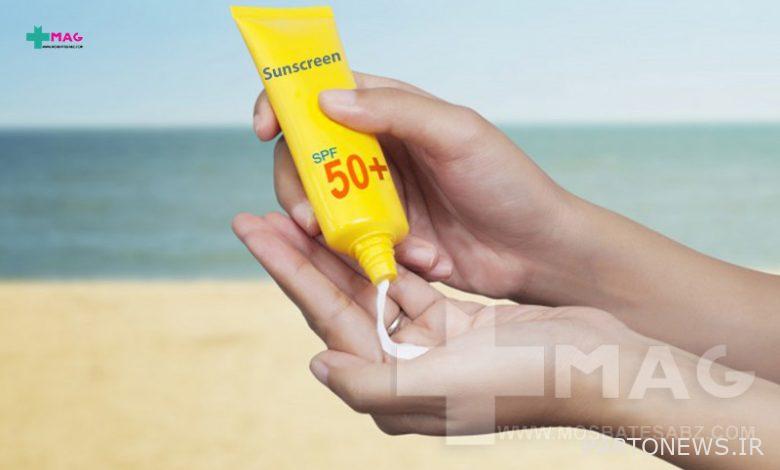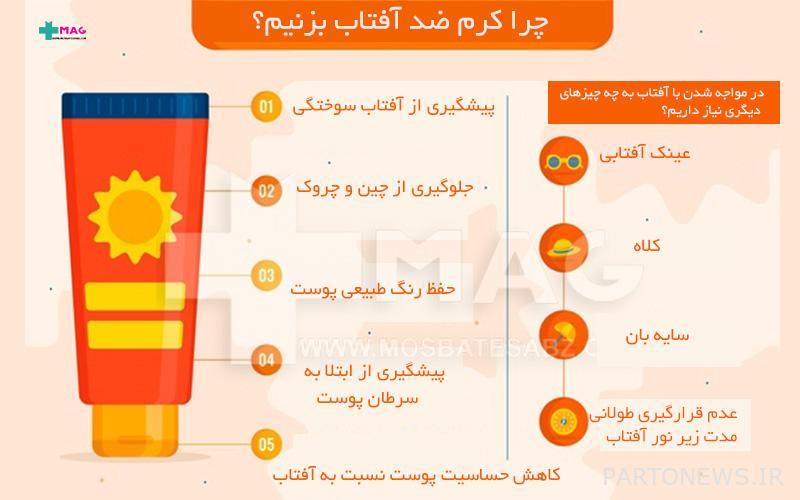What do sunscreens do to our skin? (How sunscreen works on the skin)

Sunscreen products can be easily found in pharmacies in the form of creams, lotions, sprays or gels. Sunscreen is a product that, with its active ingredients, reflects or scatters the sun’s ultraviolet rays from the skin. In this way, with the protection of the skin, the damage of the harmful rays of the sun is neutralized and it helps to maintain the health of the skin. Do you know the principles of how sunscreen works? Join us to get comprehensive information about sunscreen.
What we read in this article
Types of sunscreen
Sunscreens are a combination of different ingredients to prevent UV damage to the skin. In general, sunscreens fall into two categories:
- Physical blockers or physical sunscreens: Titanium dioxide or zinc oxide minerals form in this type of sunscreen. When you apply sunscreen to your skin, these active ingredients sit on the surface of the skin and reflect UV rays away from the skin.
- Chemical or sunscreens: These sunscreens contain carbon and form a thin protective layer on the skin that absorbs UV rays before penetrating the skin surface.
How sunscreen works on the skin
Now that you are familiar with the types of sunscreens, you will find that sunscreens work in two ways, depending on the ingredients used in them:
1- Sunscreen, if physical, contains zinc oxide or titanium dioxide and reflects ultraviolet rays. The function of this sunscreen is exactly the same as white, which reflects light.
2. Chemical sunscreens often contain organic chemicals with names such as avobenzone or oxybenzone, and unlike physical sunscreens that reflect light, they absorb UV rays through chemical bonds. As the sun absorbs the sun’s ultraviolet rays, the compounds in the chemical sunscreen slowly decompose and release heat.
The use of any type of sunscreen, whether chemical or physical, protects the skin from the harmful rays of the sun.
UVB rays are a major cause of sunburn and skin cancer. But UVA rays penetrate deeper into the skin and may play a greater role in skin wrinkles. Recent research by scientists has shown that even UVA rays are involved in skin cancer. It is better to buy a sunscreen that, in addition to protecting against UVB rays, also protects the skin against UVA rays.
Is physical or chemical sunscreen better?
Now that you know how sunscreen works on your skin, you may be wondering which type of sunscreen is best. Both chemical and physical sunscreens have their benefits. In fact, many of the sunscreens you find in pharmacies and stores are a combination of the two. Physical sunscreens usually do not irritate or irritate the skin or cause allergic reactions. But they may cause the skin to turn white and oily. Chemical sunscreens are often clear and easily absorbed into the skin, but can cause allergic reactions if used. Therefore, many sunscreens on the market contain a combination of chemical and physical sunscreens to maximize the benefits and minimize the harms.
Note the following table:
| Sunscreen type | Advantages | Harms |
| Chemical | Resistant to sweating and washing / Fast absorption on the skin | Probability of causing allergies / Does not work immediately (usually 20 minutes) |
| Physical | Do not irritate the skin and cause allergies / effects immediately after use | Whitening and oily skin / feeling heavy on the skin |
It is usually recommended for all pregnant and lactating women to use physical sunscreen during pregnancy and lactation.
Related Posts
Pay attention to SPF or sun protection factor
How the sunscreen works will undoubtedly depend on its SPF as well. SPF refers to how long it takes for your skin to burn compared to when you did not apply sunscreen. With an example, it might be easier to get acquainted with the concept of SPF. For example, if your skin becomes red and burnt about 10 minutes after sun exposure, it takes 15 times longer for these symptoms to appear if you apply SPF15 sunscreen. This means that instead of 10 minutes, it takes 150 minutes for you to get a sunburn.
Most experts recommend using a sunscreen with an SPF of 15 to 50. It has not been proven at present that SPF above 50 can be much more effective than SPF 50. Note the following values:
| SPF (protection factor) | Percentage of sun protection |
| SPF15 | 93% |
| SPF30 | 97% |
| SPF50 | 98% |
| SPF100 | 99% |
Benefits of using sunscreen
Sunscreen has the following benefits:

Reduce the risk of skin cancer
Research shows that sunscreen can prevent skin damage that can lead to skin cancer. More than 90% of skin cancers are caused by constant exposure to sunlight (without sunscreen). Skin cancer is one of the most common types of cancer that can be easily prevented by using sunscreen.
Prevent premature aging
The only advantage of using sunscreen is that it does not prevent sunburn. This product can even be effective in preventing the appearance of wrinkles and reducing fine lines on the face. The sun’s UVA rays have a direct effect on wrinkles.
Prevention of blemishes on the skin
Some types of skin blemishes are caused by exposure to sunlight. These spots may fade at first and darken over time. Regular use of sunscreen helps prevent blemishes.
Avoid sunburn
Exposure to sunlight for a long time will definitely cause sunburn. Some people have more sensitive skin and show signs of sunburn in a short time. Sunburn weakens the skin and causes an unpleasant discoloration. Redness, scaling, swelling and itching are the symptoms caused by sunburn.
Concluding remarks
There are two ways in which sunscreens work on the skin. If the sunscreen is physical, it protects the skin by reflecting the sun’s harmful rays, and if it is chemical, it absorbs these rays. The only benefit of using sunscreen is not the prevention of skin cancer. This cream can also be effective in preventing the appearance of wrinkles and blemishes on the skin. How committed are you to consistent use of sunscreen?
Please rate this article
[مجموع: ۲ میانگین: ۵]


